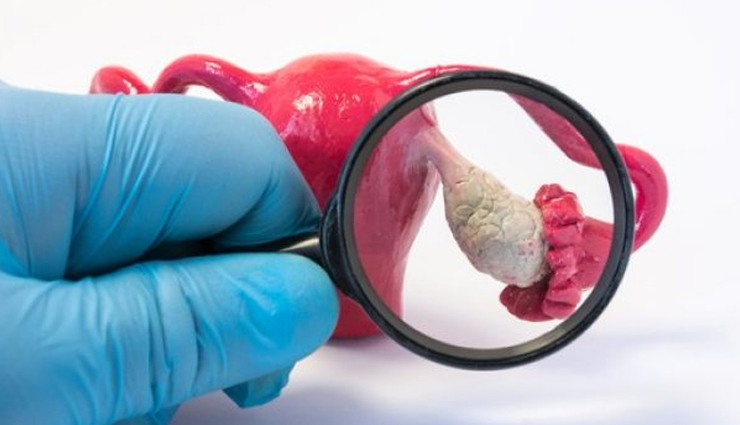- Home›
- Healthy Living›
- 5 Yoga Asanas That Will Help You Treat Ovarian Cyst
5 Yoga Asanas That Will Help You Treat Ovarian Cyst
By: Kratika Maheshwari Sat, 30 July 2022 1:02:56

Yoga provides a natural way of alleviating the problems associated with the ovarian cyst. Yoga helps in maintaining the hormone balance which leads to a reduction in the size of the ovarian cyst. Here are some yoga poses that may help you to treat ovarian cyst:

# Butterfly Pose:
The butterfly pose, also called the Purna Titli Asana, is very simple and helps to open up the hips. It is also a great stretching exercise for the thighs, relieving stress.
- Sit on the floor in a lotus pose.
- Bend your knees and make the soles of your feet touch each other.
- Try to position your legs in such a way that they are placed as close to the pubic area as possible.
- Pull the inwards as much as possible.
- Keep your back straight and hold your feet with your hands.
- Breathe deeply, and as you exhale try to push your knees down towards the ground with your hands.
- Stay within your comfort level as this requires practice.
- Allow the knees to come back up as you exhale in a flapping motion.
- Repeat the process 15 to 20 times.

# Reclining Butterfly Pose:
This pose is similar to the butterfly pose but is performed lying down. It is extremely relaxing and also stimulates the abdominal organs.
- Start with the position of the butterfly pose.
- Slowly, lean back and lower your upper body as you exhale.
- Using your hands for support, balance the back of your pelvis and lower back.
- Bring your torso to the floor until your back touches the floor.
- You can use a pillow to support your head and neck.
- Keep your arms at your sides with your palms up.
- At this point, the knees are facing away from the hip, with the feet facing towards the pelvis.
- Try not to stretch the thigh muscles too hard. Let the knees hang in the air and breathe deeply for 10 minutes.

# Cobra Pose:
The cobra pose relieves anxiety and stress besides improving blood circulation.
- Begin by lying down on the stomach, forehead facing the floor.
- The feet should slightly touch each other, while the hands are under the shoulders, palm down and parallel to each other.
- On an inhalation, lift your chest and head, until your navel.
- Use the support of your hands to keep your upper body off the floor.
- As you breathe deeply, stretch back and feel your spine curve.
- Keep the shoulders downwards and relaxed, while the elbows can be slightly bent.
- Maintain the pose for as long as you are comfortable.

# Bharadvajasana:
Also called the Bharadvaja’s twist, this pose helps to improve metabolism and regenerates abdominal organs. This pose is particularly suited for pregnant women.
- Sit on the floor and stretch the legs before you.
- Relax your hands at your side and bend your knees towards the left hip.
- Now, the weight of your body is resting on the right buttock.
- As you breathe, lengthen your spine as twist your upper body as much as possible. Use the right hand placed on the floor for balance.
- Press the weight of your body from the hip towards the floor.
- Bend slightly in this position and feel the pull from the base of your spine to the head.
- Hold the position for a few minutes and repeat the twist on the other side.

# Chakki Chalanasana:
This pose is called ‘moving the grinding wheel’ and has many benefits. Importantly, it helps improve the function of many abdominal organs.
- Sit on the floor, keeping your legs wide apart.
- Bring hands together, interlock fingers and turns palms outside.
- Extend the arms outward so that the backs of the hands are facing you and the elbows are straight.
- Here, start moving the hands in a circular motion horizontal to the ground, as if using a grinding wheel.
- Bend at the waist using the lower back. Remember to keep the arms straight and not to bend the elbows.
- Inhale when hands come towards you and exhale when they move outwards.
- Move forwards and backwards in large circular movements, covering the toes.
- Repeat the process for 10 to 15 times in both clockwise and anticlockwise directions.





